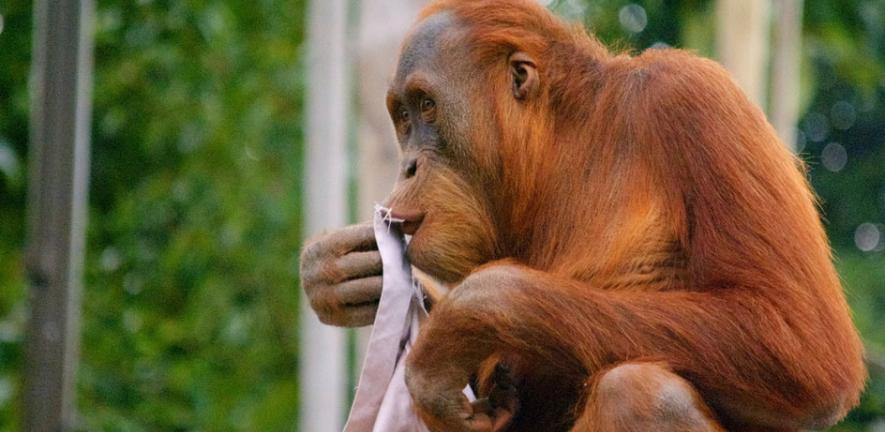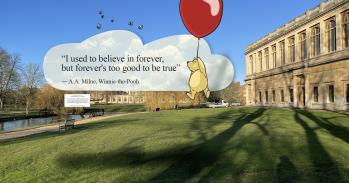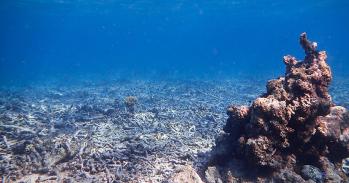
A Cambridge PhD student is swapping the comforts of city life for a small hammock in the jungle while he studies orang-utans in Borneo for the next two years.
A Cambridge PhD student is swapping the comforts of city life for a small hammock in the jungle while he studies orang-utans in Borneo for the next two years.
Little is known about how far and wide male orang-utans travel, and why they seem to disappear without trace for months or years on end.
Ben Buckley of the Wildlife Research Group at the School of Anatomy will be tracking adult male orang-utans in the Sabangau Forest in Central Kalimantan, Indonesia.
Little is known about how far and wide male orang-utans travel, and why they seem to disappear without trace for months or years on end.
Ben's research should help solve this mystery and provide information vital for conserving the species in the wild. He will be talking about his work - and his fascination with orang-utans - to the Cambridge Natural History Society this week.
Before arriving in Cambridge Ben worked in eastern Congo for the Dian Fossey Gorilla Fund, with the Max Planck Institute on an international bonobo research project, and in Borneo with the Orang-utan Tropical Peatland Project (OuTrop), so he is well equipped to deal with the challenges of studying adult male orang-utans.
According to Ben: "Some are very belligerent - so then it's a case of cowering and avoiding eye contact with them, at the same time as keeping an eye out for any dead tree they may wish to throw at you - but they are endlessly fascinating."
He will also be collecting faeces so that he can analyse orang-utans' DNA to discover clues about their complex social system, how closely they are related to each other and to identify patterns in dispersal.
Along with gibbons, orang-utans are the only apes that live outside Africa. Adult males can weigh up to 90 kg and can live for 40-50 years. They are unique among primates as they exhibit two adult male forms or "bi-maturism".
Some males develop large flaps or "flanges" on their cheeks and a large throat sac, helping them produce long, booming calls. This is part of the way they attract mates, Ben explains: "Flanged males are large and not very mobile; their sexual strategy is to sit and call and wait for females to come to them. Unflanged males tend to take a more 'go, find and take' approach to reproduction."
Unlike other apes such as gorillas and chimpanzees, which live in family groups, orang-utans are a solitary species and individuals range widely for food, making them harder to study. Because of this, Ben will be spending periods of up 10 days following individual male orang-utans, camping under the trees they nest in each night.
Orang-utans live only on the islands of Borneo and Sumatra. Both are endangered or critically endangered species, with populations of around 45,000 in Borneo, and only around 7,000 in Sumatra.
Logging, mining, forest fires and conversion to oil palm plantations are all destroying the orang-utans' forest habitat.
The Sabangau peat-swamp forest is in Central Kalimantan, in the south of the island of Borneo, and is the largest area of lowland rainforest remaining in Borneo. Estimates suggest that the Sabangau river catchment and ecosystem is home to the world's largest orang-utan population, put at 6,910 individuals in 2003, and is rich in other rare plants and animals.
Severe drainage, drought and dead wood left after logging make the area a tinder box, and forest fires have destroyed large areas of forest in recent years.
Ben's talk is at 19:30 on Thursday 11 February in room 308 of the David Building at Anglia Ruskin University (entrance off Broad Street), Cambridge.
For more details about volunteering, visit www.orangutantrop.com. Since the volunteering programme began in 2001, more than 170 students from 11 countries have worked on forest ecology and animal behaviour projects in Sabangau.
This work is licensed under a Creative Commons Licence. If you use this content on your site please link back to this page.





